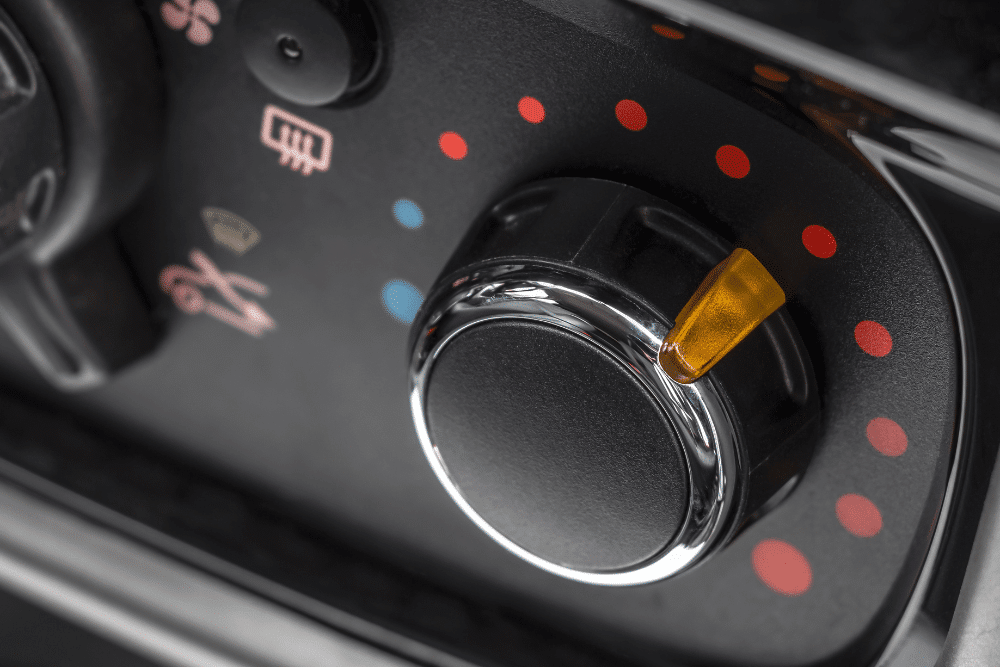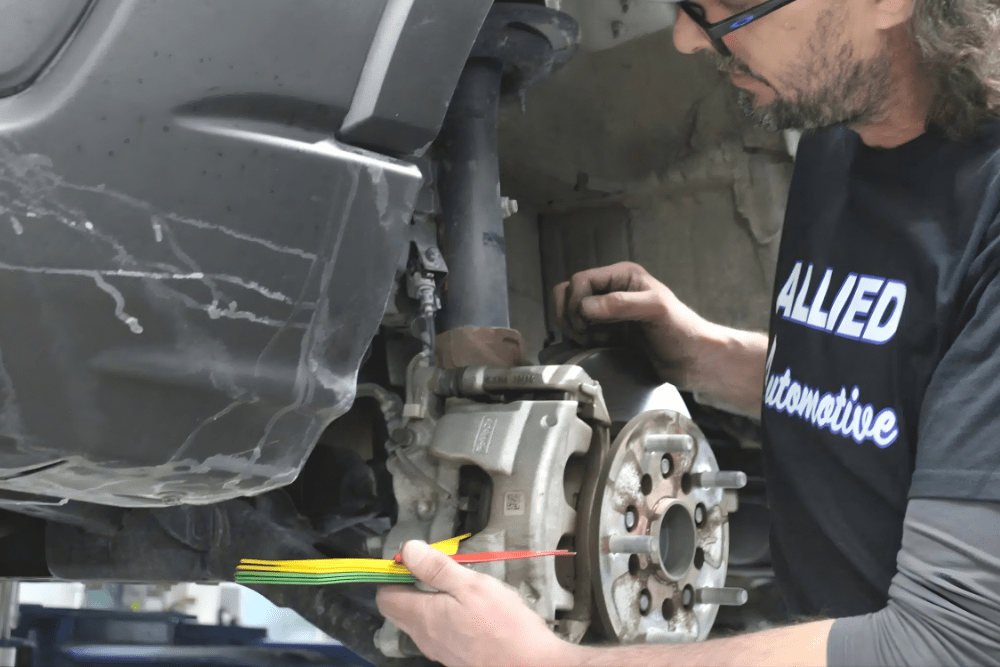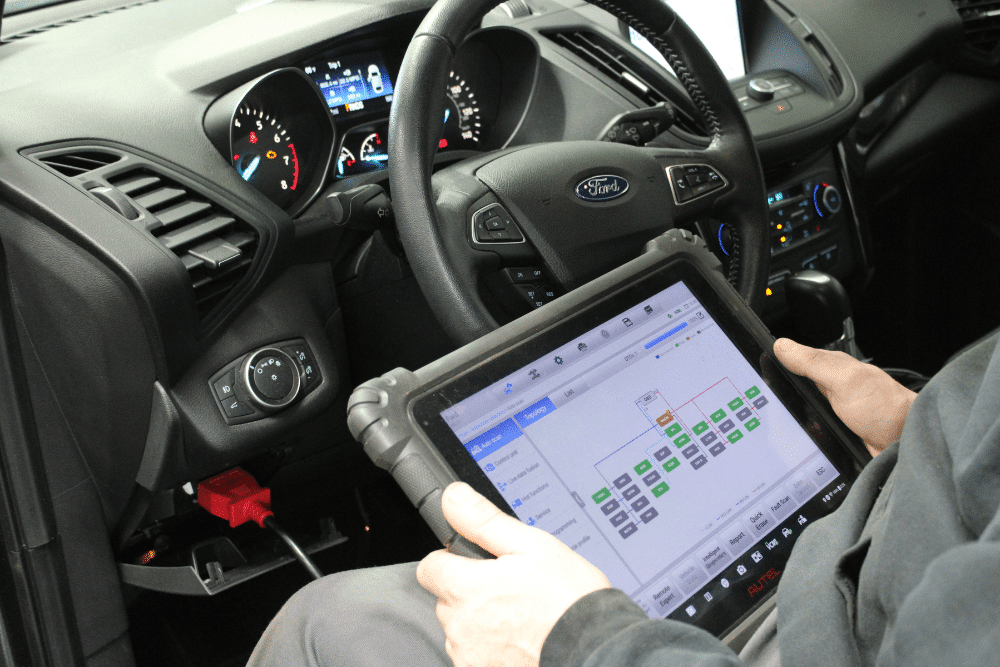Is your car heater blowing cold air when you need warmth most? You’re not alone. This is one of the most common concerns drivers bring to Allied Automotive in Allentown, PA, as temperatures begin to drop. The short answer is that some heating issues require simple fixes like coolant top-offs or thermostat replacements, while others need comprehensive repairs like heater core replacement or blower motor service.
In this article, we will cover:
- How car heating systems actually work and what can go wrong
- The step-by-step heater repair process professionals use
- Essential maintenance tasks to prevent heater failures
- The difference between heater core problems and blower motor failures
- Why fall diagnostics are essential before winter weather hits
- What to expect during professional heater service
By the end, you will understand your options clearly and know what to expect before scheduling your fall car prep service with a trusted shop like Allied Automotive.
How a Healthy Heater System Protects More Than Just Your Comfort
- Window Defrosting and Safety: Your heater system works with the defroster to clear ice and fog from windows, maintaining clear visibility in winter conditions.
- Engine Temperature Control: The heater core acts as a secondary radiator, helping regulate engine temperature and preventing overheating.
- System Longevity: Proper coolant circulation through the heater core prevents corrosion and extends the life of your entire cooling system.
Ignoring heater problems can lead to higher costs later. A failing heater core can damage your engine’s cooling system, while a broken blower motor can leave you stranded in dangerous winter conditions.
Heater Core vs. Blower Motor: Understanding What's Causing the Issue
Sometimes the best way to understand your heating problems is to know the key components that could be failing.
| Aspect | Heater Core Issues | Blower Motor Problems |
|---|---|---|
| What It Does | Transfers heat from engine coolant to cabin air | Circulates air through the heating system |
| Common Symptoms | No heat, coolant smell, foggy windows | No airflow, weak airflow, or loud noises |
| Typical Causes | Coolant leaks, blockages, or corrosion | Electrical failure, worn bearings, or debris |
| Repair Complexity | More complex, requires dashboard removal | Moderate, usually accessible under dash |
| Prevention | Regular coolant flushes and system maintenance | Clean cabin air filters, check electrical connections |
Tip: If you smell coolant inside your car or see foggy windows that won’t clear, schedule a heater core inspection immediately.
Signs Your Car Heater Needs Service Before Winter
Don’t wait for the first freeze to discover heating problems. Watch for these early warning signs during fall car prep:
- Air blows but stays lukewarm or cold
- Sweet coolant smell inside the cabin
- Windows fog up repeatedly, even with defrost on
- Unusual grinding or squealing noises from the dashboard
- Engine temperature gauge runs hotter than normal
Signs That Indicate Immediate Professional Attention
If you’re experiencing these symptoms, it’s time for comprehensive heater diagnostics:
- Complete loss of heat from all vents
- Visible coolant leaks on your garage floor
- Steam or smoke coming from vents
- Engine overheating warnings
- Blower motor won’t turn on at any speed
If you notice any of these issues, schedule your auto heater repair in the Lehigh Valley immediately to prevent engine damage and ensure winter safety.
The Professional Heater Repair Process: What Happens
When you bring your vehicle to Allied Automotive for heater problems, here’s exactly what our ASE-certified technicians do:
Step 1: Initial System Assessment
We begin with a visual inspection, checking coolant levels, looking for leaks, and testing basic heater operation. We examine the dashboard area for signs of coolant smell or fogging.
Step 2: Computer Diagnostics
We use dealer-level scan tools to check for trouble codes related to blend door actuators, temperature sensors, and other electronic components that control cabin temperature.
Step 3: Coolant System Testing
We perform pressure tests to identify hidden leaks, check coolant condition, and verify proper thermostat operation. Poor cooling system performance prevents adequate heat removal.
Step 4: Blower Motor and Electrical Testing
We test the blower motor at all speeds, inspect electrical connections, and check the cabin air filter. Poor airflow often results from blower motor problems rather than heating issues.
Step 5: Heater Core Evaluation
If other components check out, we test the heater core function by monitoring coolant flow and temperature. A blocked or leaking heater core requires extensive repair work.
Step 6: Component Replacement and System Restoration
We replace faulty components using OEM-quality parts, flush contaminated coolant if needed, and restore your heating system with thorough testing.
Essential Heater Maintenance: Preventing Problems Before They Start
Regular maintenance prevents most heater failures and extends component life. Here’s what professional heater maintenance involves:
- Coolant System Service (Every 3-5 Years): Fresh coolant prevents corrosion that clogs heater cores. Old coolant becomes acidic and creates debris that blocks narrow heater core passages.
- Cabin Air Filter Replacement (Annually): A clogged cabin filter forces your blower motor to work harder, leading to premature failure and reduced airflow.
- Thermostat Testing and Replacement: A failing thermostat prevents hot coolant from reaching the heater core. We test thermostat operation during cooling system service.
- Blower Motor and Electrical Inspection: We check blower motor operation, clean electrical connections, and verify proper current draw to prevent failures and fire hazards.
- Hose and Connection Inspection: We inspect heater hoses for cracks, soft spots, and loose connections that can cause coolant loss and heating failure.
Why Fall Diagnostics Should Always Come First
It’s tempting to wait until you need heat to service your heating system. However, discovering problems during the first cold snap can leave you uncomfortable and unsafe.
A proper heater diagnostic should include:
- Coolant level and condition check
- Thermostat operation test
- Heater core flow and temperature verification
- Blower motor function at all speeds
- Electrical system inspection for blend door operation
Skipping these steps during fall car prep can result in emergency repairs during winter’s worst weather.
Dealer-Level Tools, Local Care: The Allied Automotive Difference
Many repair shops offer basic heater service, but here’s what sets us apart for car heater repair in Allentown, PA:
Transparent, Relationship-Driven Service
We focus on educating customers about their heating systems rather than just selling repairs.
Dealer-Level Diagnostic Equipment
We use OEM-grade scan tools and pressure testing equipment, ensuring accurate diagnosis of complex heating issues.
Convenience for Busy Families and Professionals
- Nine loaner cars available
- Free shuttle service
- Secure after-hours drop-off and pickup
- Mobile payment options
Confidence You Can Rely On
All heater repairs come with a 36-month / 36,000-mile warranty and a 5-year workmanship warranty.
To learn more about our complete automotive services, visit our Auto Heating & Cooling page and discover how we keep Allentown drivers comfortable year-round.
Preventing Future Heating Problems
Want to ensure reliable heat all winter? Follow these fall car prep habits:
- Replace cabin air filter annually before cold weather
- Schedule coolant system inspection every fall
- Test heater operation during early autumn
- Address any coolant leaks immediately
- Keep up with regular cooling system maintenance
FAQs About Car Heater Repair in Allentown
Why is my car heater blowing cold air instead of heat?
Cold air from your heater typically indicates low coolant levels, a failing thermostat, or a blocked heater core. Sometimes the issue is as simple as trapped air in the cooling system, but persistent cold air requires professional diagnosis to prevent engine damage and ensure winter safety.
Can low coolant cause my car heater to stop working?
Yes, low coolant is one of the most common causes of heater failure. The heater core depends on hot coolant circulation to produce warm air. Even small coolant leaks can eliminate cabin heat while allowing your engine to run normally, making fall inspections crucial.
How much does it cost to repair a car heater in Allentown, PA?
The cost to repair a car heater depends on the issue, from simple thermostat fixes to more complex heater core problems. At Allied Automotive, we provide a clear diagnosis and upfront estimate so you know exactly what to expect.
What's the difference between a heater core flush and replacement?
A heater core flush removes debris and contaminants to restore proper coolant flow, while replacement involves installing a new heater core when the original is damaged or severely blocked. Flushing costs much less and often resolves heating issues when performed regularly.
How often should I service my heating system before winter?
Schedule heater system inspection annually during fall car prep, typically in September or October. This timing allows for repairs before cold weather hits and ensures your heating system is ready for winter driving conditions throughout the Lehigh Valley.
Schedule Your Fall Car Prep & Heater Service in Allentown, PA
Don’t let the first cold snap catch you unprepared. A failing heater can turn winter driving into a dangerous situation. That’s why Allied Automotive offers comprehensive fall diagnostics, heater repairs, and preventive maintenance tailored to your vehicle’s needs. Backed by ASE certification and a 36-month/36,000-mile warranty, we stand behind every service.
Make the smart choice for expert car heater repair in Allentown, PA. Contact Allied Automotive at 610-351-0020, visit our shop at 5580 Quince Rd, Allentown, PA 18106, or schedule your fall car prep service online. Your warmth and safety on winter roads start with preparation today.



